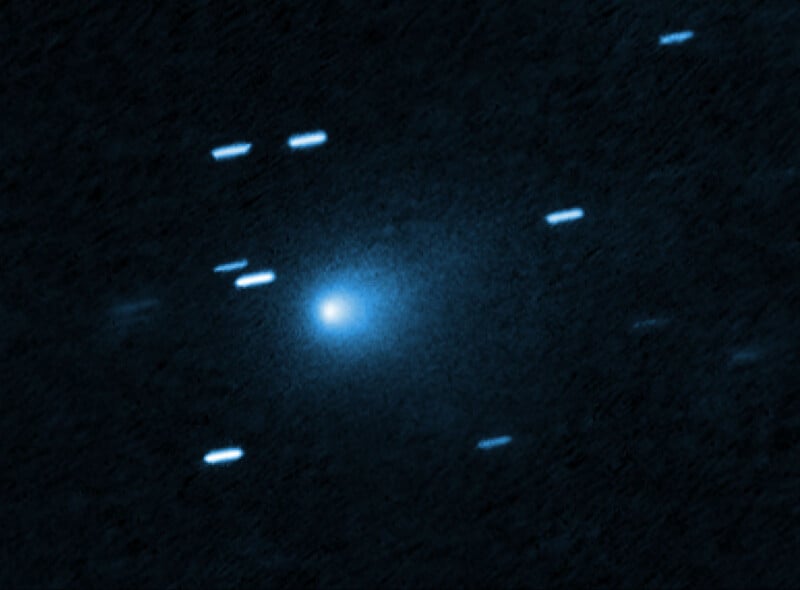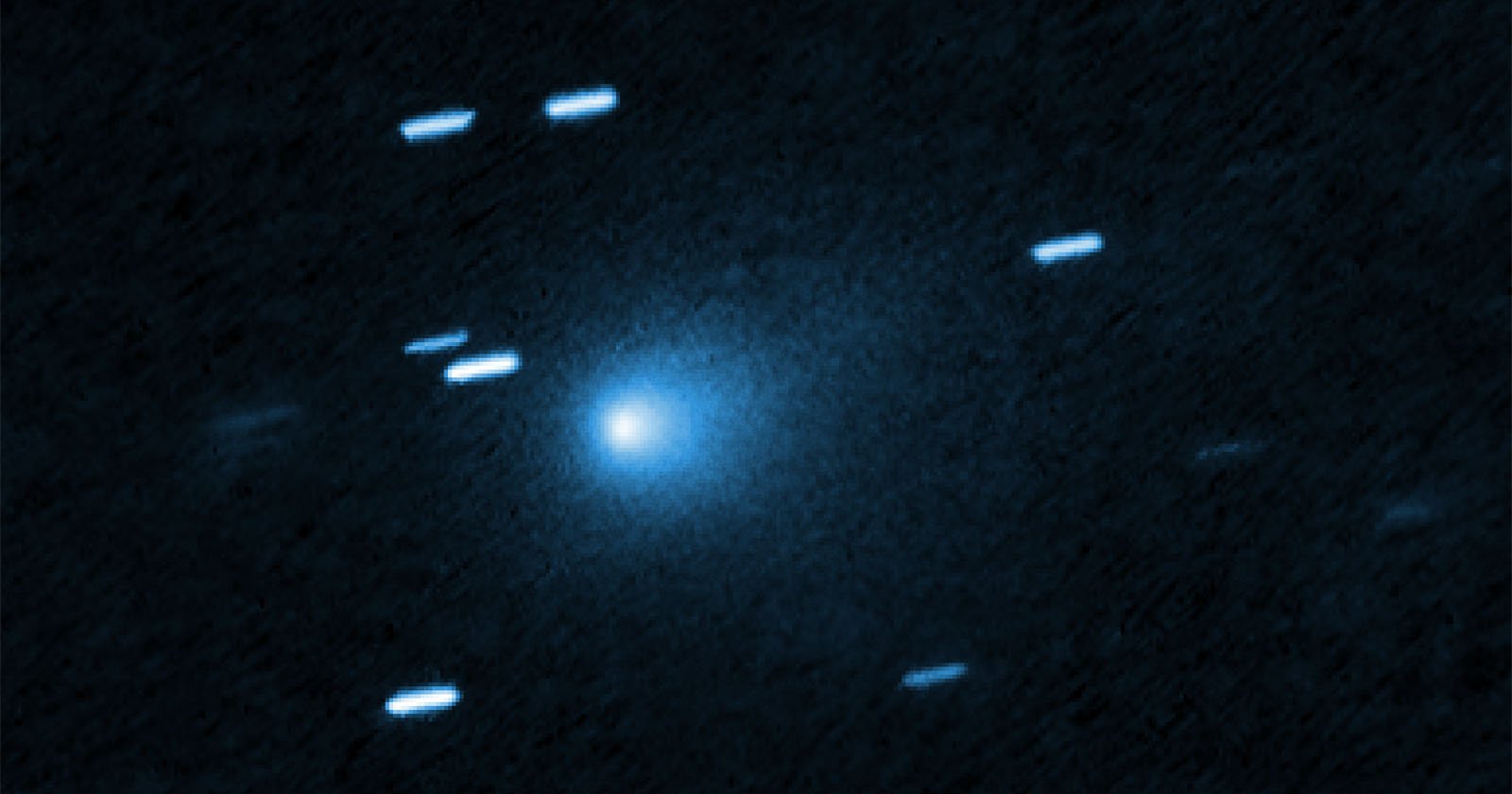 ‘This is a Hubble Space Telescope image of the interstellar comet 3I/ATLAS. Hubble photographed the comet on July 21, 2025, when the comet was 277 million miles from Earth. Hubble shows that the comet has a teardrop-shaped cocoon of dust coming off its solid, icy nucleus. Because Hubble was tracking the comet moving along a hyperbolic trajectory, the stationary background stars are streaked in the exposure.’
‘This is a Hubble Space Telescope image of the interstellar comet 3I/ATLAS. Hubble photographed the comet on July 21, 2025, when the comet was 277 million miles from Earth. Hubble shows that the comet has a teardrop-shaped cocoon of dust coming off its solid, icy nucleus. Because Hubble was tracking the comet moving along a hyperbolic trajectory, the stationary background stars are streaked in the exposure.’
Astronomers used NASA’s Hubble Space Telescope to capture the sharpest-ever photo of the comet 3I/ATLAS as it flew through the solar system at 130,000 miles per hour (209,000 kilometers per hour).
Hubble is one of many NASA missions to have peered at the unexpected interstellar comet that was initially discovered on July 1, 2025, by the NASA-funded Asteroid Terrestrial-Impact Last Alert System (ATLAS) survey telescope in Chile. Following its discovery, astronomers dug through archival data from three other ATLAS telescopes and found evidence of the comet dating back to June 14.
Comet 3I/ATLAS is only the third known object from outside the solar system to be discovered, per NASA. It is classified as an “interstellar” object because of the “hyperbolic shape of its orbital path.” The comet does not follow a closed orbital path around the Sun. Based on its observed orbit and behavior, the object must have originated outside the solar system.
Comet 3I/ATLAS does not pose any threat to Earth, as the closest it will approach is only 170 million miles (270 million kilometers). While relatively close to Earth compared to most things in space, that is still very far away — 1.8 astronomical units (au). The comet will reach its closest point to the Sun later this year on October 30, at a distance of about 130 million miles (210 million kilometers, 1.4 au. That will place the comet “just inside the orbit of Mars.”
Given its exceptional rarity, comet 3I/ATLAS has been a fascinating subject for scientists as they work to learn as much as possible about the object. Thanks to Hubble’s detailed observations, astronomers have accurately estimated the size of the comet’s “solid, icy nucleus” to be between 1,000 feet and 3.5 miles (320 meters to 5.6 kilometers).
While this sounds like a fairly large range, it is worth considering that Hubble has provided the best, clearest data yet, and that the comet is careening through space at 130,000 miles per hour. It is a relatively small and exceptionally swift target.
NASA’s James Webb Space Telescope, Transiting Exoplanet Survey Satellite (TESS), and Neil Gehrels Swift Observatory, plus the W.M. Keck Observatory, will also build upon Hubble’s observations to provide more information about the interstellar visitor, including its chemical composition.
Given the comet’s “breathtaking” speed, the highest ever recorded for a “solar system visitor,” scientists believe comet 3I/ATLAS has been drifting through space for “many billions of years.”
“No one knows where the comet came from. It’s like glimpsing a rifle bullet for a thousandth of a second. You can’t project that back with any accuracy to figure out where it started on its path,” says David Jewitt of the University of California, Los Angeles. Jewitt is the science team leader for the Hubble observations.
Jewitt is lead author on a research paper about the comet, “Hubble Space Telescope Observations of the Interstellar Interloper 3I/ATLAS,” which is available now on arxiv and will be published shortly in The Astrophysical Journal Letters.
Image credits: NASA, ESA, David Jewitt (UCLA); Image Processing: Joseph DePasquale (STScI)

